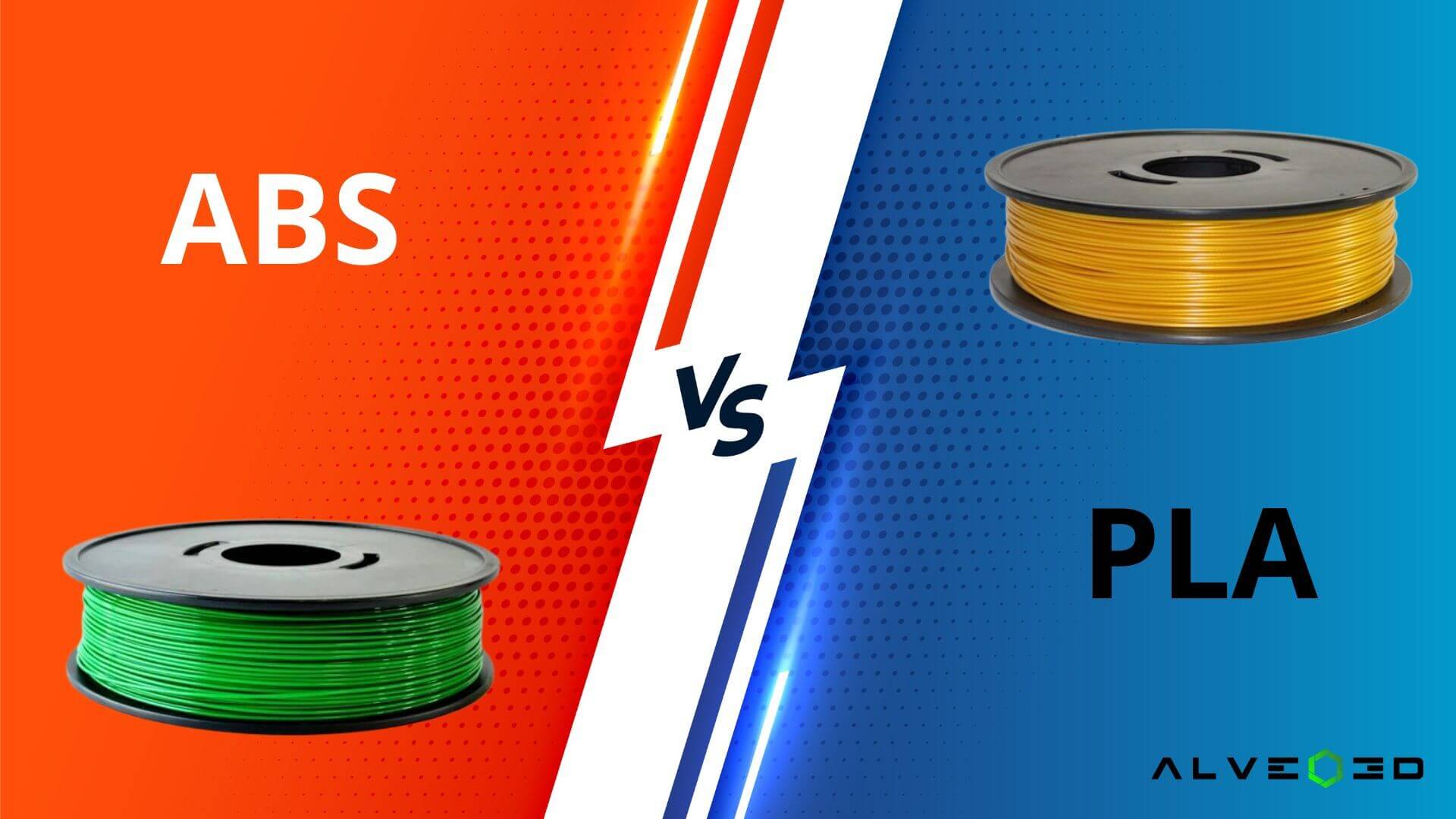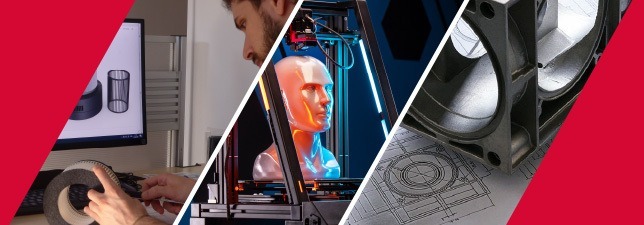PLA and ABS are two widely used polymers in 3D printing. Here’s a brief description of each:
1. PLA (Polylactic Acid):
-
- Origin: Derived from natural resources such as corn starch or sugarcane.
- Characteristics: Biodegradable, low toxicity, emits fewer toxic gases during printing. Suitable for environmentally conscious projects and prototype printing.
2. ABS (Acrylonitrile Butadiene Styrene):
-
- Origin: Thermoplastic derived from petroleum.
- Characteristics: Sturdy, resilient, and durable. It emits strong toxic fumes during printing, so it’s recommended to print in a well-ventilated area. Ideal for parts requiring mechanical strength.
Among the thermoplastics commonly used in additive manufacturing, both for professionals and for individual makers, PLA and ABS are widely used filaments. PLA is very easy to print, and requires low temperatures.
ABS offers superior technical characteristics, but often requires the use of a closed or heated chamber to avoid shrinkage phenomena and releases strong plastic odors. We have measured the emissions of nanoparticles from these two 3D printing filaments. Is PLA less harmful than ABS?

II. PLA vs. ABS Comparison: The Protocol
It is possible to find large differences in composition between the same families of thermoplastics from different manufacturers. This base is often similar but there is a significant amount of potential additives that each manufacturer can add to give specific properties: color, texture, mechanical or thermal resistance etc.
The printer was put in an Alveo3D 60x60x60cm enclosure without activating the air filtration system.
Particle measurement is performed using a condensation particle counter (CPC). The device accurately measures the range of particles from 20 to 100nm. Between each test, the room is ventilated and a reading of the particle concentration in the ambient air is taken.
III. Comparison PLA vs. ABS: Results
The data collected from the two tests highlights two main principles:
- ABS produces more nanoparticles than PLA
- PLA is not harmless.
In practice, before each test in ambient air, we measured 4000 nanoparticles/cm3 of air.
- During PLA printing, we measured a maximum concentration of 66000 nanoparticles/cm3 with an average of around 15000 nanoparticles/cm3.
- During ABS printing, the maximum concentration reached was 260000 nanoparticles/cm3 with an average of 150000 nanoparticles/cm3.
The highest concentrations are measured at the beginning of the print, regardless of the filament used. In the first 5 minutes, the concentration strongly increases, stabilizes itself at an average value then slowly declines at the end of the print.
IV. 3D Printing: Precautions to Take
The use of a 3D printer enclosure highlights the emissions of nanoparticles from both PLA and ABS filaments. Although this PLA filament requires lower melting temperatures and generates fewer nanoparticles than ABS, we still observed concentrations that were 16 times higher than atmospheric levels.
During the most critical phase of ABS printing, we recorded concentrations more than 60 times higher than atmospheric levels. To avoid exposure to such high levels of nanoparticle concentrations in the air, we recommend:
- Positioning the 3D printer in a spacious and well-ventilated room.
- Enclosing the printer with a casing equipped with a filtration or air extraction system.
- Ventilating the area for at least 5 minutes before opening the casing to access the printer.
- Using an efficient particle filtration system for FDM printer emissions (10–100 nm).
This invisible pollution of nanoparticles is present in the additive manufacturing process for all types of filaments, whether they are naturally derived like PLA or derived from petroleum like ABS.
If you are printing at home, it is advisable to place the printer in a well-ventilated room and make a casing for it, equipped with an air filtration system like the AlveoONE. For companies or training centers, the custom-made polycarbonate-aluminium casing represents an aesthetically pleasing and effective solution for protecting operators and the public.







0 Comments